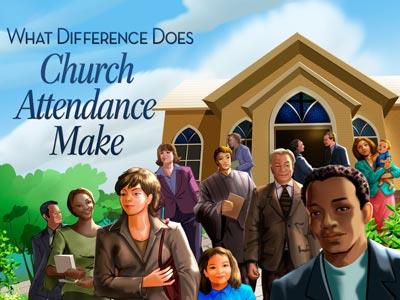-
Organization Of The Church
Contributed by Dr. William D. Poovey on Nov 28, 2017 (message contributor)
Summary: The church began not as a mixture of saved and unsaved. Only true believers would associate with the new religion of Christ..
Church, Organization of the
Organization of the Church
The church began not as a mixture of saved and unsaved. Only true believers would associate with the new religion of Christ. The way was too narrow for people to walk in, and persecution from the outside and judgment from the inside (Acts 5) Inept people out of the church in the very beginning. Those who did not fully conform to the teachings of Christ left Him before He was crucified (John 6:66-71). Judas backslid and committed suicide, and the secret believers would not come out wholly for Christ. After Pentecost there was such persecution of the church that no one would dare join unless he had made a consecration to suffer (Acts 5:13). Such passages as Acts 1:14; 2:1, 42-47; 4:23-37; 5:12-42 plainly show the united state of the early church. Sin began to enter by Ananias and Sapphira, but it was quickly judged, making the people fearful of joining the church who were not true (Acts 5:1-16). Later on, division started, and it was quickly settled (Acts 6:1-7). Persecution continued to keep the church clean of all hypocrites for some time, and when it ceased troubles in the ranks of Christians began to appear. As the church grew, more divisions and strife appeared until it was necessary to write letters constantly correcting certain doctrines and practices among believers. Tares appeared, and since then Christendom has been a mixture of tares and wheat (Matt. 13:36-43).
As churches multiplied and pagans were converted who did not know the Bible, it became necessary to make written laws and form an organization to control believers and require them to conform to the teachings of Christ and the apostles. Another factor that made it necessary for a more definite form of government in the church was the fact of the conversion of many Jews who still held to the law of Moses.
That there was no organization in the early church is not supported by any part of the New Testament or early church history. Of course, the organization was not the same as in some churches of today, but it was a real organization controlled by the apostles and elders and other leaders in other parts of the church world.
The organization of the church will be studied under the following healings:
1. THE FACT OF CHURCH ORGANIZATION
When we use the word church in a collective sense we refer to the many local churches that were established throughout the world. We may speak of the Methodist Church, the Baptist Church, or the Presbyterian Church of America. The term church simply means churches. When we speak of the New Testament church we mean the exclusive body of Christ made up of all true new-creature Christians of all the world and of this whole age regardless of personal church affiliation. The following facts in the New Testament prove that there was an organization among the early believers:
(1) Even when Christ was alive the followers of Christ were formed into different groups such as "twelve apostles" (Matt. 10; Luke 9), "seventy" (Luke 10), and the general body of "disciples" in addition to the special eighty-two preachers ordained to preach and heal (Matt. 8:21; 10:42; Luke 14:26-33; 19:37; John 6:60-66; 8:31; 9:28; 19:38; Acts 1:15; 1 Cor. 15:6). Judas was the treasurer of the disciples (John 13:29). Laws of discipline were given for the whole church in the days of Christ (Matt. 18:17). The Lord added to the church 3,000 souls on Pentecost, and if there had been no church before this there could not have been anything to add to (Acts 2:41). There was a church roster, for the names together at Pentecost were 120 (Acts 1:15). Again, over 500 brethren are mentioned as seeing Christ at one time after the resurrection (1 Cor. 15:6). Voting was carried on by the church (Acts 1:15-26). Many other laws and ordinances were given to the church by Christ, as recorded in the four gospels. Ministers were trained and ordained by Christ (Matt. 10; Luke 9 and 10). Commissions to the church were all given by Christ (Matt. 28:18-20; Mark 16:15-20; Luke 24:49-52; Acts 1:4-8). There were regular meetings held by the disciples before Pentecost (John 20:19, 26; Luke 24:33, 49-52, Acts 1).
(2) Before and after Pentecost the apostles were recognized as the leaders of the church (Acts 1:15-26; 2:14, 42-47; 4:35, 37; 5:1-16, 18, 29; 6:1-7; 8:14; 11:1-18, 22-30; 15:2, 23). Business elders were chosen by the church at the command of the apostles (Acts 6:1-7). When other churches were established, local leaders arose to care for them. They were called "bishops and deacons" (Phil. 1:1), "elders" and "overseers" (Acts 20:17, 28), "ambassadors" (2 Cor. 5:20), "apostles . . . prophets . . . evangelists . . . pastors and teachers" (Eph. 4:11; 1 Cor. 12:28), "servants" (Rom.16:1; Acts 4:29; 2 Cor. 4:5), "ministers" (2 Cor. 3:6-15), "workers" (2 Cor. 6:1), "stewards" (1 Cor. 4:1-2; 1 Pet. 4:10), "witnesses" (Acts 1:8), "messengers" (2 Cor. 8:23), "fishers of men" (Matt. 4:19), "laborers" (Matt. 9:38; 1 Thess. 3:2), and "preachers" (Rom.10:14; 1 Tim. 2:7). The fact that there were leaders of churches proves organization and government for the churches.

 Sermon Central
Sermon Central



